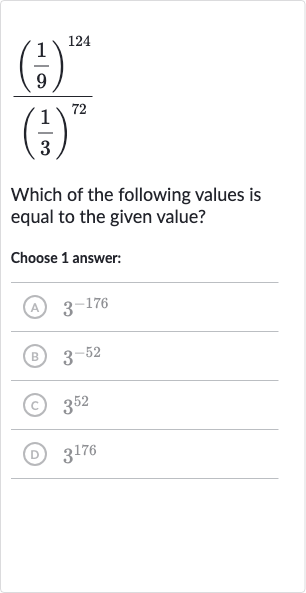Full solution
Q. Which of the following values is equal to the given value?Choose answer:(A) (B) (C) (D)
- Simplify expression using exponents: Simplify the given expression using the properties of exponents.The given expression is . We know that and . Let's rewrite the expression using these equivalences.Now, apply the power of a power rule .So the expression becomes .
- Apply power of a power rule: Apply the quotient of powers rule to simplify the expression further.The quotient of powers rule states that when ..
- Apply quotient of powers rule: Match the simplified expression to one of the given choices.The simplified expression is , which corresponds to choice (A) .
More problems from Compare linear and exponential growth
QuestionGet tutor help
QuestionGet tutor help
QuestionGet tutor help
QuestionGet tutor help
QuestionGet tutor help
QuestionGet tutor help
QuestionGet tutor help

